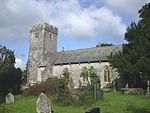Peterston railway station
1858 establishments in Wales1964 disestablishments in WalesBeeching closures in WalesDisused railway stations in CardiffFormer Great Western Railway stations ... and 5 more
Pages with no open date in Infobox stationRailway stations in Great Britain closed in 1964Railway stations in Great Britain opened in 1858Use British English from October 2022Wikipedia page with obscure subdivision
Peterston railway station served the village of Peterston-super-Ely in South Wales between 1858 and 1964.
Excerpt from the Wikipedia article Peterston railway station (License: CC BY-SA 3.0, Authors).Peterston railway station
Station Terrace,
Geographical coordinates (GPS) Address Nearby Places Show on map
Geographical coordinates (GPS)
| Latitude | Longitude |
|---|---|
| N 51.4784 ° | E -3.3281 ° |
Address
Station Terrace
Station Terrace
CF5 6LU , Peterston-super-Ely
Wales, United Kingdom
Open on Google Maps










